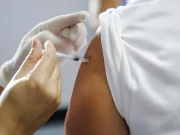Tag: RSV2
Guidelines Issued for Vaccination as Part of Cardiovascular Care
Recommendations encourage flu, pneumococcal, COVID-19, RSV, and zoster vaccinations in individuals with cardiovascular disease
Natural Language Processing Algorithms Can ID High-Risk Childhood Asthma Subgroup
Pneumonia, influenza A/B, and asthma exacerbation risks highest in those positive for both Predetermined Asthma Criteria and Asthma Predictive Index
West Coast States Issue Their Own COVID, Flu, RSV Vaccine Rules
California, Hawaii, Oregon and Washington recommend COVID shots for young children, older adults and pregnant women
RSV Vaccine Prevents RSV-Linked Hospitalization Among Older Adults Over Two Seasons
Estimated vaccine effectiveness was significantly lower for immunocompromised adults and those with CVD
Infants Without Comorbidities Also at Risk for Severe RSV Infection
Median age of those admitted to ICU was 1.9 months, and only 41.3 percent had an underlying comorbidity
29 Percent of Infants Immunized Against RSV in 2023 to 2024 Season
Infant RSV immunization coverage through nirsevimab or maternal vaccination ranged from an estimated 11 to 53 percent by state
Nirsevimab Effective for Protecting Infants From RSV Lower Respiratory Tract Disease
Effectiveness seen for RSV lower respiratory tract disease, hospitalized RSV lower respiratory tract disease, PCR-confirmed RSV
Seniors With RSV-Linked Hospitalization Have Increased Cardiovascular Outcomes
Patients hospitalized with RSV have greater risk for subsequent heart failure events compared with patients with influenza, UTI, fracture
35 Percent of Eligible Children Receive RSV Prophylaxis With Nirsevimab
Older age, Black race, very low Child Opportunity Index, public insurance linked to lower rates of nirsevimab receipt














